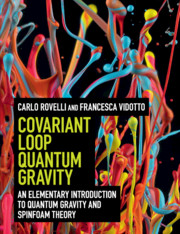1 - Spacetime as a quantum object
from Part I - FOUNDATIONS
Published online by Cambridge University Press: 05 February 2015
Summary
This book introduces the reader to a theory of quantum gravity. The theory is covariant loop quantum gravity (covariant LQG). It is a theory that has grown historically via a long, indirect path, briefly summarized at the end of this chapter. The book does not follow the historical path. Rather, it is pedagogical, taking the reader through the steps needed to learn the theory.
The theory is still tentative for two reasons. First, some questions about its consistency remain open; these will be discussed later in the book. Second, a scientific theory must pass the test of experience before becoming a reliable description of a domain of the world; no direct empirical corroboration of the theory is available yet. The book is written in the hope that some of you, our readers, will be able to fill these gaps.
This first chapter clarifies what is the problem addressed by the theory and gives a simple and sketchy derivation of the core physical content of the theory, including its general consequences.
The problem
After the detection at CERN of a particle that appears to match the expected properties of the Higgs [ATLAS Collaboration (2012); CMS Collaboration (2012)], the demarcation line separating what we know about the elementary physical world from what we do not know is now traced in a particularly clear-cut way.
- Type
- Chapter
- Information
- Covariant Loop Quantum GravityAn Elementary Introduction to Quantum Gravity and Spinfoam Theory, pp. 3 - 29Publisher: Cambridge University PressPrint publication year: 2014



